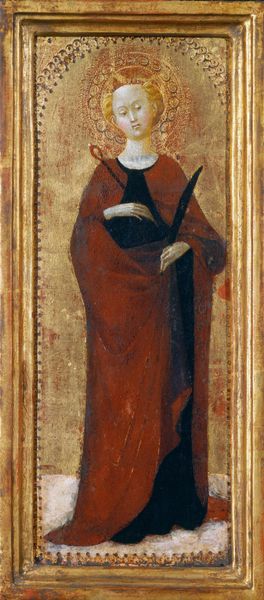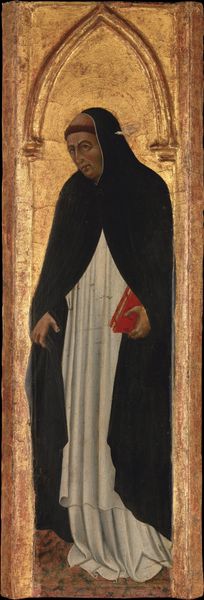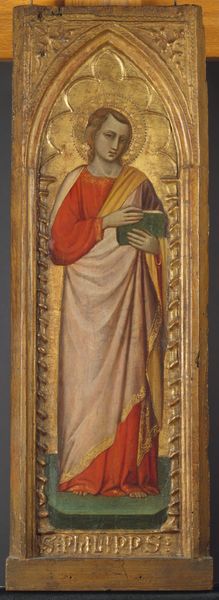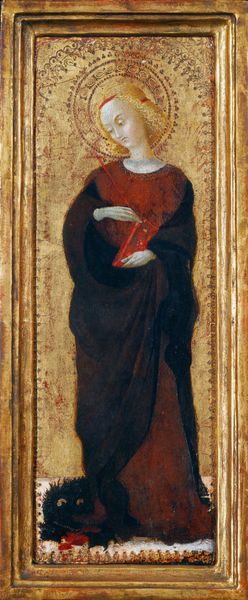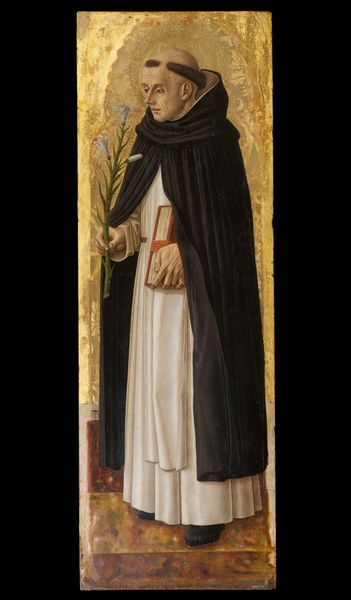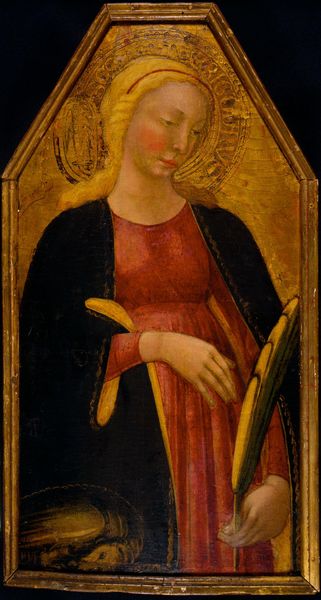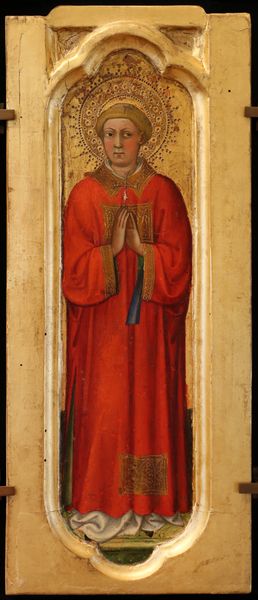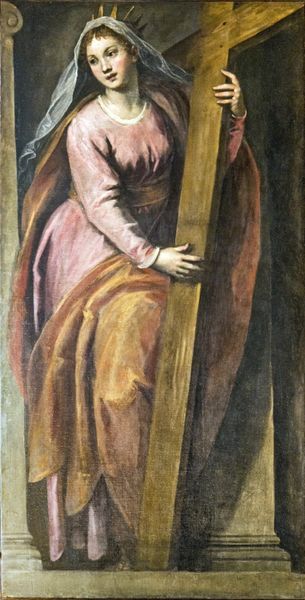
The Blessed Andrea Gallerani (died 1251) 1447 - 1465
0:00
0:00
panel, tempera, painting, oil-paint
#
portrait
#
panel
#
allegory
#
narrative-art
#
tempera
#
painting
#
oil-paint
#
figuration
#
oil painting
#
classicism
#
history-painting
#
academic-art
#
italian-renaissance
#
early-renaissance
#
realism
Dimensions: Overall, with engaged frame: 20 1/4 in. × 7 in. (51.4 × 17.8 cm) Painted surface: 19 × 4 7/8 in. (48.3 × 12.4 cm)
Copyright: Public Domain
Curator: Oh, there’s something so melancholy about this panel. The somber palette, the figure’s downward gaze… it just speaks of quiet contemplation. Editor: It does evoke a sense of gravity. We’re looking at "The Blessed Andrea Gallerani (died 1251)" by Giovanni di Paolo, created sometime between 1447 and 1465. It's tempera and oil on a wood panel, currently residing at the Metropolitan Museum. Curator: Tempera and oil, huh? That combo gives it that incredible matte finish, almost like a fresco lifted straight from a Tuscan wall. It grounds him, makes him so real. The red cross on his chest – a visual anchor. But his posture, slightly stooped… is he weary or humble, I wonder? Editor: That mix of mediums was somewhat experimental for the period, giving Giovanni a broader range of textures and luminosity than traditional tempera alone allowed. Gallerani was a Sienese nobleman who renounced his wealth to care for the sick – hence, likely, that subdued, humble affect you noticed. Representations like these were important for constructing legacies. Curator: Legacies are slippery things, aren't they? I mean, here he is, enshrined in art, his earthly possessions seemingly shed like an old skin. But is that the full story? Does the artist grant him serenity or just project an ideal? Editor: Well, artistic representation always involves a degree of shaping, wouldn't you agree? This image presents Gallerani as a civic and spiritual exemplar, part of a visual program aimed to promote particular values within the Sienese republic. Consider the controlled perspective, the somber colors… they reinforce the desired message. Curator: That gilded archway looming behind him...it feels less heavenly and more like a gilded cage, or perhaps an ideal just out of reach. A halo wouldn't be nearly so imprisoning, perhaps that’s why he’s so serious. A saint who traded earthly bonds for other restraints. Editor: I hadn’t quite considered that framing quite that way, but I think that’s a very astute way to put it. The painting operates within a larger system of representation and patronage, one tied to social and political motivations as well as faith. Curator: Ultimately, Giovanni di Paolo leaves us with more questions than answers about the Blessed Andrea Gallerani's soul. He leaves me wondering how easily earthly complexity transforms into saintly simplicity with a few well-placed brushstrokes. Editor: It is a testament to the lasting power of images that can distill historical actors into icons, prompting viewers across centuries to ponder lives, beliefs, and legacies, much like our conversation today.
Comments
No comments
Be the first to comment and join the conversation on the ultimate creative platform.
